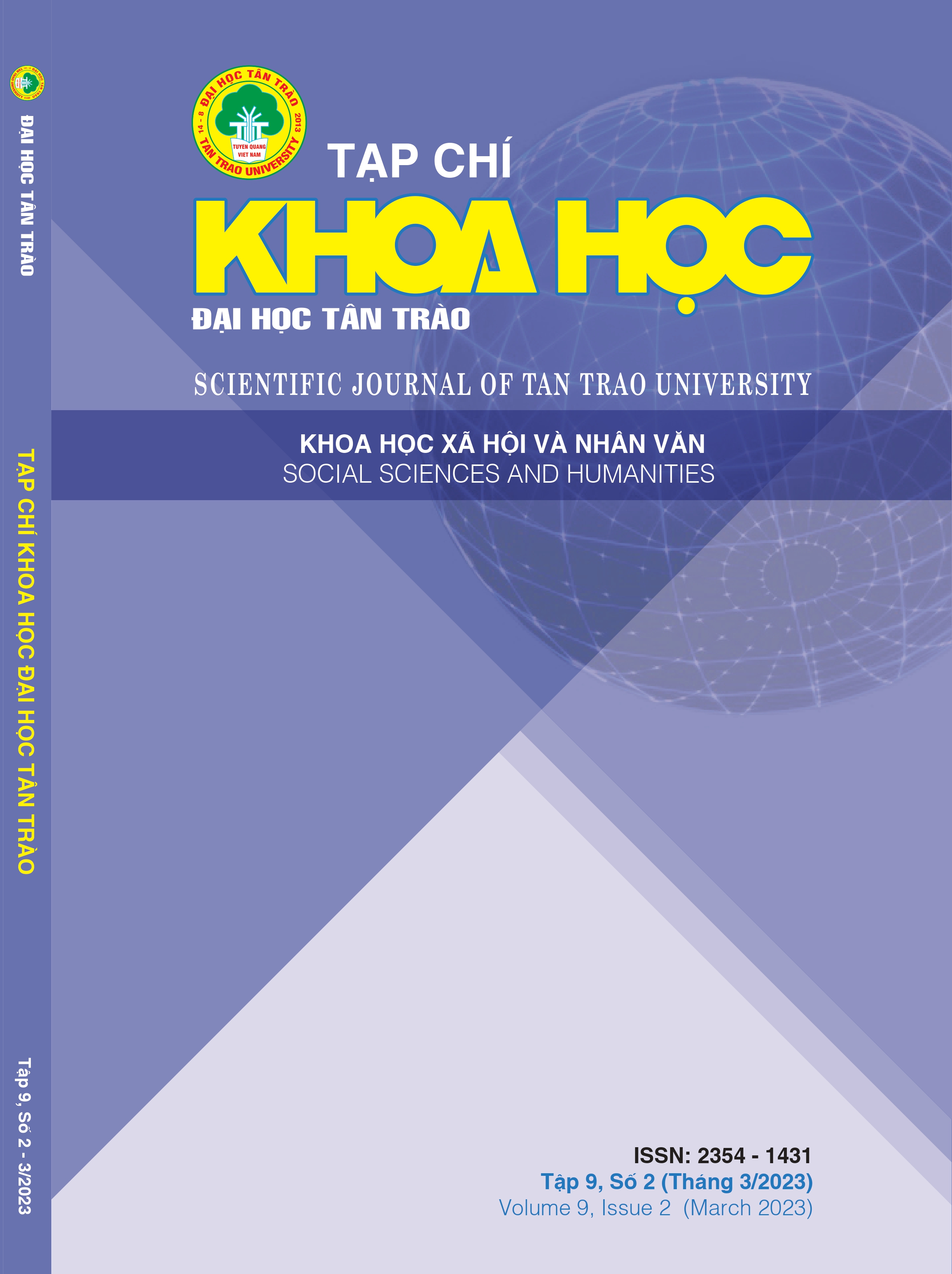CULTURAL VALUES OF TAY TRADITIONAL HOUSING THUONG LAM COMMUNE, LAM BINH DISTRICT, TUYEN QUANG PROVINCE
DOI:
https://doi.org/10.51453/2354-1431/2023/921Keywords:
Values, Tay people, house, traditions, culture.Abstract
In Lam Binh district, Tuyen Quang province, the Tay people have the largest population, residing mainly in the communes of Thuong Lam, Khuon Ha, Lang Can, Phuc Son and Minh Quang. Here, the community still retains outstanding cultural features, including housing culture. Research on the culture of forming traditional houses of the Tay people in Thuong Lam commune to see the unique and distinctive features of the people about the concept of "settlement and happiness". This is the national cultural identity that needs to be preserved, preserved and promoted, contributing to the diversity of the cultural picture of Vietnam's ethnic groups. To obtain the results, the author uses research methods such as: Analysis, synthesis; Descriptive methods and fieldwork, survey methods. From there, conclude the unique socio-cultural and spiritual values that traditional houses bring to the community. This is a cultural feature that enriches the spiritual life of the people and is an asset that the Tay Thuong Lam people need to preserve for future generations.
Downloads
References
[1] Anh, B.T., Huyen, T.T. (2010), Culture, literature and local languages of Tuyen Quang province, University of Education Publisher;
[2] Binh, T. (2017), Culture of ethnic minorities in the North, The gioi Publisher;
[3] Binh, T. (2014), Vietnamese Ethnic minorities, Labor - Society Publisher;
[4] Doanh, D.M.N. (2018), Ethnic minorities in Tuyen Quang and The Current Human Rights Issues, Labor – Society Publisher;
[5] Dung, M.N. (2006), Tradition and changes in eating habits of Tay people in the Northeast Vietnam, Institute of Ethnology;
[6] Do, N.V. (editor), Khanh,N.P., Hung, H.T. (2003) Tradition Culture of the Tay, Dao, and San Diu ethnic communities in Tuyen Quang, Hanoi National Culture Publisher;
[7] Nam, H. (2004), Culture of ethnic communities in the Northeast, Curriculum of Hanoi University of Culture;
[8] Quynh, D.T. (2013), Traditional houses of the H'mong in Pho village, Bac Ha district, Lao Cai province, Cultural Information Publisher;
[9] Thinh, N.D. (1993) Preserving and promoting traditional culture of ethnic communities, National culture Publisher;
[10] Thinh, N. (editor), Phu Ninh (2002), Traditional culture of Tay, National culture Publisher;
[11] Tung, N.K. (1996), Vietnamese traditional house, National culture Publisher
[12] Them, T.N. (2011), Vietnam Cultural Foundation, Hanoi Education Publisher;
[13] The, T.T. (2019), The change of traditional houses of the Tay people in Thuong Lam commune, Lam Binh district, Tuyen Quang province for community tourism development, scientific research project at the university level;
[14] Vien,H.V., Phung, H.V. (1979), Ethnic Minorities in Tuyen Quang, Ethnic Committee of Tuyen Quang province;
[15] Website of Lam Binh district: http://dulichlambinh.gov.vn/
Downloads
Published
How to Cite
Issue
Section
License

This work is licensed under a Creative Commons Attribution-ShareAlike 4.0 International License.
All articles published in SJTTU are licensed under a Creative Commons Attribution-ShareAlike 4.0 International (CC BY-SA) license. This means anyone is free to copy, transform, or redistribute articles for any lawful purpose in any medium, provided they give appropriate attribution to the original author(s) and SJTTU, link to the license, indicate if changes were made, and redistribute any derivative work under the same license.
Copyright on articles is retained by the respective author(s), without restrictions. A non-exclusive license is granted to SJTTU to publish the article and identify itself as its original publisher, along with the commercial right to include the article in a hardcopy issue for sale to libraries and individuals.
Although the conditions of the CC BY-SA license don't apply to authors (as the copyright holder of your article, you have no restrictions on your rights), by submitting to SJTTU, authors recognize the rights of readers, and must grant any third party the right to use their article to the extent provided by the license.


